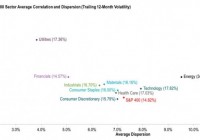How Combining Quality, Value And Growth Metrics Produce The Best Results
Finally. I’m ready to share what I call the “Action Score”. A score showing how combining quality, value and growth produces fantastic results. If you have time, check out the details of how I created the quality, value and growth ratings. Or here’s a quick summary for each. How the Action Score is Built As I mentioned, it’s a combination of 3 time and tested factors. 1. Quality Quality stocks are ranked and scored based on CROIC – signals competitive advantage, management effectiveness. CROIC between 23-40 is the best range to be in. FCF/Sales – signals cash generation ability, how efficient a company is. FCF/Sales has to be positive. Piotroski score – signals fundamental strength. Highest is best. 2. Value The Value score is based on P/FCF – has the biggest impact on the results and receives the highest weighting EV/EBIT – does a great job of identifying cheap stocks and receives the second highest weighting P/B – acts as a “cleaning” filter to remove stocks where you overpay for assets. Also a way to remove bad stocks you wouldn’t want to own no matter how cheap it looks Piotroski score – assigned a fairly high weighting so that the list removes “lotto” stocks 3. Growth Growth stocks are created using TTM sales percentage change – to find growing companies but also limited to a certain upper percentage to eliminate high flyers 5 year sales CAGR – to find growing companies that are not perennial losers Gross Profit to Asset Ratio (GPA) – a wonderful measure of profitability to find stocks that are making the best use of their assets to generate sales Piotroski F Score – assigned a fairly high weighting so that the list removes “lotto” stocks Each stock is given a Q, V and G score based on its data and rank. The Q, V and G scores are then averaged to give the final “Action Score”. I call it Action because these are the stocks I should be acting on. Whether it be reading, thinking or discussing. How good are these Action Stocks? Take a look. The Final Rating System – Backtested Performance These are the latest and final backtested results based on the newest edition of the algorithm. Full 2015 results are included to give a complete 17 year backtest. Q% is the full year percentage return for stocks with the highest Quality Score V% is the full year percentage return for stocks with the highest Value Score G% is the full year percentage return for stocks with the highest Growth Score Action Score% is the full year percentage return for stocks with the highest average of the Q,V and G scores Top 20 stocks are chosen at the start of each year All stocks held to the end of the year Fees, volume, slippage not considered Full Universe of Stocks Used in Backtest The final theoretical 29% CAGR performance of the Action Score is simply astounding, but it includes the entire universe of stocks in the backtest which skews the results. Trust me, you won’t be able to achieve the same results because it includes OTC stocks you won’t be able to buy due to limited supply or brokerage rules. Financial stocks are also included which skews results because certain ratios for finance stocks are inflated simply because of the nature of the business. That’s why I created a second version that excludes OTC stocks Financials Miners Utilities Click to enlarge No OTC, Financials, Miners, Utilities in Backtest It brings the final result down to 20% CAGR over a 17 year period. To keep it conservative, I think real money results will come in around 15%. I’ll still be uber happy with such long term results and once this is fully launched and running, I’ll be looking into creating a real money portfolio to really put it to the test. The Grading System Each Action Score is assigned a grade to make it easier to identify and analyze. Greater than 85 = A Between 75 and 85 = B Between 65 and 75 = C Between 50 and 65 = D Below 50 = F Distribution of 2016 Scores for Q, V, G and Action You’ll see that I’ve purposely limited the number of A grade stocks. Based on the data at the start of the year, here’s a look at the distribution of how many stocks are in each score range. In the current list there are only 68 A grade Action Stocks compared to 498 B grade Action Stocks. As you see below, a company really has to earn its place to get an A. Click to enlarge The Top 10 Action Score Stocks So that I don’t leave you hanging, here’s a list of the top 10 stocks with the highest Action Score as of the first week of January. With the price action going on in the market, some new stocks may have entered the top 10 in the last week, but there shouldn’t be too many differences. Click to enlarge The chart above shows the top 10 stocks with the best overall Quality, Value and Growth scores. ZAGG Inc. (NASDAQ: ZAGG ) B. Riley Financial (NASDAQ: RILY ) P&F Industries (NASDAQ: PFIN ) Tata Motors (NYSE: TTM ) Ennis (NYSE: EBF ) Apple (NASDAQ: AAPL ) Flexible Solutions (NYSEMKT: FSI ) Brazilian Distributions (NYSE: CBD ) Innospec (NASDAQ: IOSP ) Brocade Communications (NASDAQ: BRCD )
